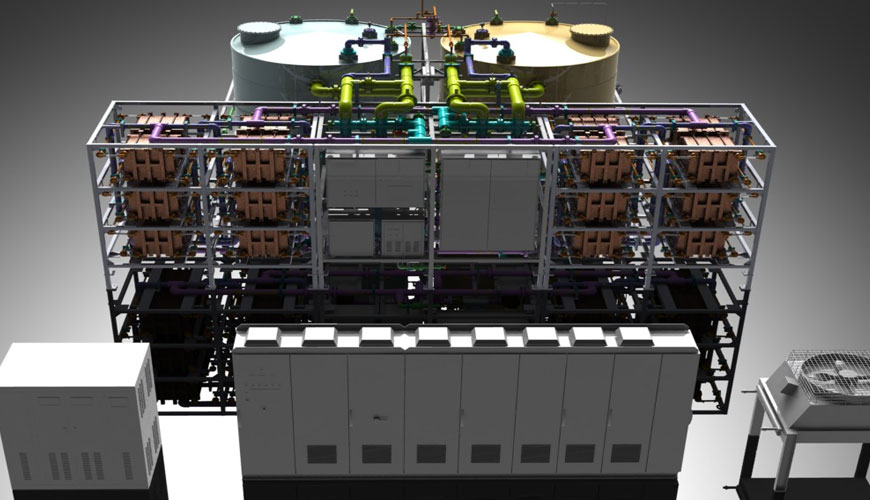

EUROLAB, with its state-of-the-art accredited laboratories and expert team, provides precise and fast testing services within the scope of NFPA 855 testing. NFPA 855 (Standard for Installation of Energy Storage Systems) is a new National Fire Protection Association Standard developed to describe the design, construction, installation, commissioning, operation, maintenance and decommissioning of fixed energy storage systems, including conventional battery systems.

This standard provides minimum requirements for fire prevention, fire protection, design, construction, installation, commissioning, operation, maintenance and decommissioning of fixed, mobile and portable ESS.
While there are many ways to generate electricity, there are only a few ways to store it for later use. Fixed energy storage systems generally refer to structures that house large batteries (connected to a renewable energy source), electronic control system, inverter and thermal management system. All of these components are in a single enclosure, either outside or inside a building.
One of the ESS's biggest concerns, especially with lithium-ion batteries, is what's called thermal runaway. These batteries generate a lot of heat, which requires an adequate cooling system to control the temperature of the ESS. However, if it gets out of control, the lithium battery can start to emit toxic gases and even explode.
ESS installed indoors, outdoors, on roofs and in open car parks will comply with this section. The building will only be used for electrochemical energy storage, power generation and other electricity grid related operations.
Occupation of rooms and areas containing ESS is restricted to personnel operating, maintaining, servicing, testing and repairing ESS and other energy systems.
The areas do not cover more than 10 percent of the construction area of the floor where they are located. The areas are separated from the ESS and other energy system rooms and areas by two hour fire barriers and two hour fire resistance rated horizontal fittings, as appropriate, constructed in accordance with locally applicable building code.
A pathway to the public road is provided from incidental use areas that do not require users to pass through areas containing ESS or other energy system equipment.
Power plant locations that meet the definition of remote will be considered asset risks (not risks to the public or first responders) whose protection must be determined by the facility's risk profile. These locations are characterized by lack of public access, limitations on first responders' access, and separation from public accessible areas.
EUROLAB assists manufacturers with NFPA 855 test compliance. Our test experts, with their professional working mission and principles, provide you, our manufacturers and suppliers, the best service and controlled testing process in our laboratories. Thanks to these services, businesses receive more effective, high-performance and quality testing services and provide safe, fast and uninterrupted service to their customers.
To get an appointment, to get more detailed information or to request an evaluation, you can ask us to fill in our form and reach you.